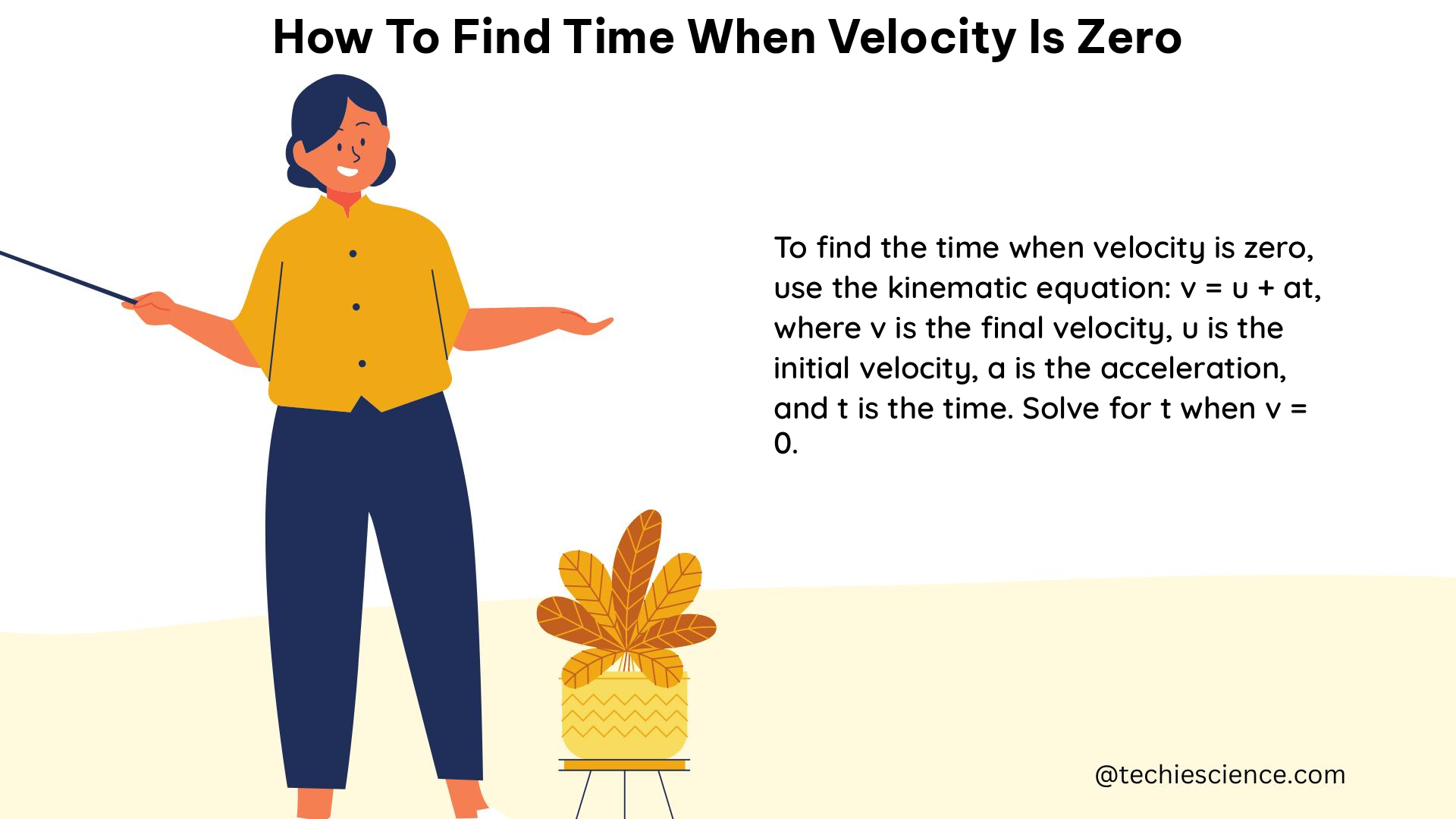When studying the motion of an object, understanding the time at which its velocity becomes zero is crucial. This information can provide valuable insights into the object’s behavior and help in analyzing its overall dynamics. In this comprehensive guide, we will delve into the step-by-step process of finding the time when velocity is zero, using the principles of calculus and physics.
Understanding Velocity and Derivatives
Velocity is the rate of change of an object’s position with respect to time. Mathematically, velocity is the derivative of the position function with respect to time. The derivative of a function represents the slope of the tangent line to the graph of the function at a particular point.
When the derivative of the position function is equal to zero, it means that the slope of the tangent line is zero, which implies that the velocity of the object is also zero. Therefore, to find the time when the velocity is zero, we need to set the derivative of the position function equal to zero and solve for the time variable.
Step-by-Step Approach

-
Identify the Position Function: Begin by determining the position function of the object, which represents its position as a function of time. This function can be given in the form of an equation, such as $f(t) = 5t^2 – 6t + 13$.
-
Find the Derivative of the Position Function: Differentiate the position function with respect to time to obtain the velocity function. The derivative of the position function is the velocity function, which can be represented as $f'(t)$.
-
Set the Derivative Equal to Zero: To find the time when the velocity is zero, we need to set the derivative of the position function equal to zero and solve for the time variable. This equation will take the form $f'(t) = 0$.
-
Solve for the Time Variable: Solve the equation $f'(t) = 0$ to find the value(s) of the time variable $t$ at which the velocity is zero. This may involve algebraic manipulation and solving for the roots of the equation.
-
Verify the Solution: Once you have obtained the time value(s) when the velocity is zero, substitute them back into the original position function to verify the corresponding position of the object at that time.
Example Calculation
Let’s consider the position function $f(t) = 5t^2 – 6t + 13$.
- The position function is $f(t) = 5t^2 – 6t + 13$.
- The derivative of the position function is $f'(t) = 10t – 6$.
- Setting the derivative equal to zero, we get:
$10t – 6 = 0$
$10t = 6$
$t = 6/10 = 0.6$ seconds - Substituting $t = 0.6$ seconds into the original position function, we get:
$f(0.6) = 5(0.6)^2 – 6(0.6) + 13 = 13.6$ meters
Therefore, the time when the velocity is zero is $t = 0.6$ seconds, and the position of the object at this time is $13.6$ meters.
Additional Considerations
-
Multiple Roots: In some cases, the equation $f'(t) = 0$ may have multiple solutions, indicating that the velocity is zero at multiple time instants. All these solutions should be considered and verified.
-
Graphical Interpretation: The points where the velocity is zero can also be identified by plotting the position function and its derivative (the velocity function) on a graph. The points where the velocity function intersects the horizontal axis represent the times when the velocity is zero.
-
Higher-Order Derivatives: In more complex motion problems, the acceleration of the object may also be of interest. The acceleration is the derivative of the velocity function, which is the second derivative of the position function. Setting the second derivative equal to zero can provide information about the points of maximum or minimum velocity.
-
Physical Interpretation: The time when the velocity is zero often corresponds to important events in the object’s motion, such as the turning points, maximum or minimum positions, or points of reversal in the direction of motion.
By following this comprehensive guide and applying the principles of calculus and physics, you can confidently find the time when the velocity of an object is zero, and gain a deeper understanding of the object’s motion and dynamics.
Reference:
- Calculus of a Single Variable by James Stewart
- Physics for Scientists and Engineers by Paul A. Tipler and Gene Mosca
- Khan Academy – Derivatives: https://www.khanacademy.org/math/calculus-1/calculus-derivatives

The lambdageeks.com Core SME Team is a group of experienced subject matter experts from diverse scientific and technical fields including Physics, Chemistry, Technology,Electronics & Electrical Engineering, Automotive, Mechanical Engineering. Our team collaborates to create high-quality, well-researched articles on a wide range of science and technology topics for the lambdageeks.com website.
All Our Senior SME are having more than 7 Years of experience in the respective fields . They are either Working Industry Professionals or assocaited With different Universities. Refer Our Authors Page to get to know About our Core SMEs.